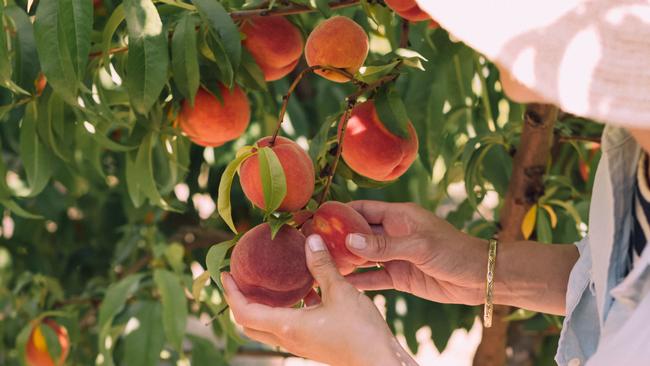News from the Edible Demo Garden
January 2022: Choosing Bare Root Fruit Trees

December and January are the best months to purchase bare root trees. The supply is much better and you will have more choices. So what does the home gardener need to consider before purchasing a fruit tree?
Climate Considerations: Chill Hours
The successful growing of deciduous tree fruits (not citrus) requires that you know how many cumulative chill hours (temperatures between 32°F and 45°F) that your area gets in the winter season. Each kind of fruit tree requires a specific number of chill hours in order to break dormancy and begin growing again in spring.
See the table below for specific hours for some popular fruits.
* Table adapted from UC's The California Backyard Orchard
There are also low chill varieties (usually less than 300 hours) that have been developed for apples, apricots, pears, peaches, and plums.
In general, Northern California gets about 800-1500 chill hours each winter. Any good bare root nursery should be able to advise you about the suitability of a particular fruit tree that you want to purchase for the area where you live.
Environmental Considerations
• Light: at the very least, 6-8 hours of sunlight daily
• Space: the right sized tree for the right space
Note: dwarf trees bear fruit earlier, but are more fussy, requiring more frequent irrigation, careful pruning, and better soil fertility. You can grow a smaller tree just by pruning it properly when planting it and regularly pruning it to keep it small.
• Pollination Requirements: self-fruitful (pollinates among its own flowers) or self-sterile (requires pollen from another variety)
• Water Source: an irrigation system is best but you can also water by hand
Fruit Tree Maintenance Requirements
• Yearly Pruning: both in winter and in summer
• Fruit Thinning: required to grow larger sized fruit
• Common Diseases of particular fruit trees:
Pear trees: fire blight
Plum trees: plum aphid
Peach & Nectarine trees: peach leaf curl
With this knowledge in your pocket, you are ready to do some after holidays shopping at your local nursery. Don’t let the maintenance requirements discourage you from starting your own small orchard. Do like our team does; research and learn as you grow. A good source for all of your questions is the UC Davis California Backyard Orchard at https://homeorchard.ucanr.edu/.
Also, check out our information on:
How to plant a bare root tree
How to grow fruit trees
